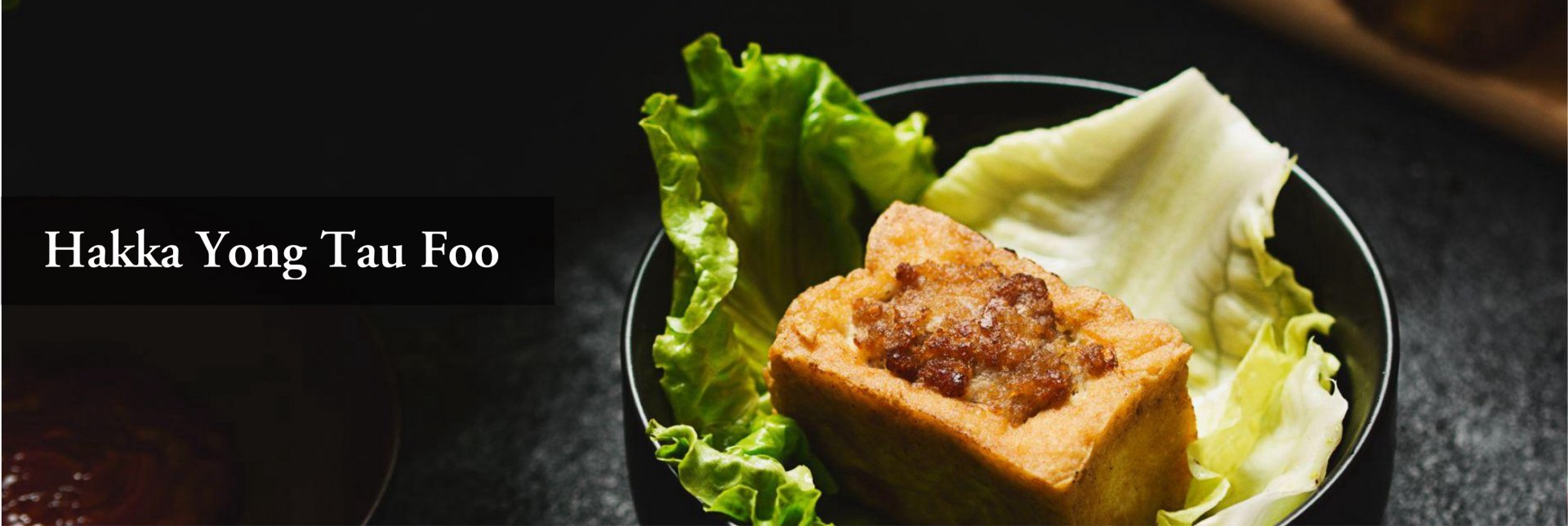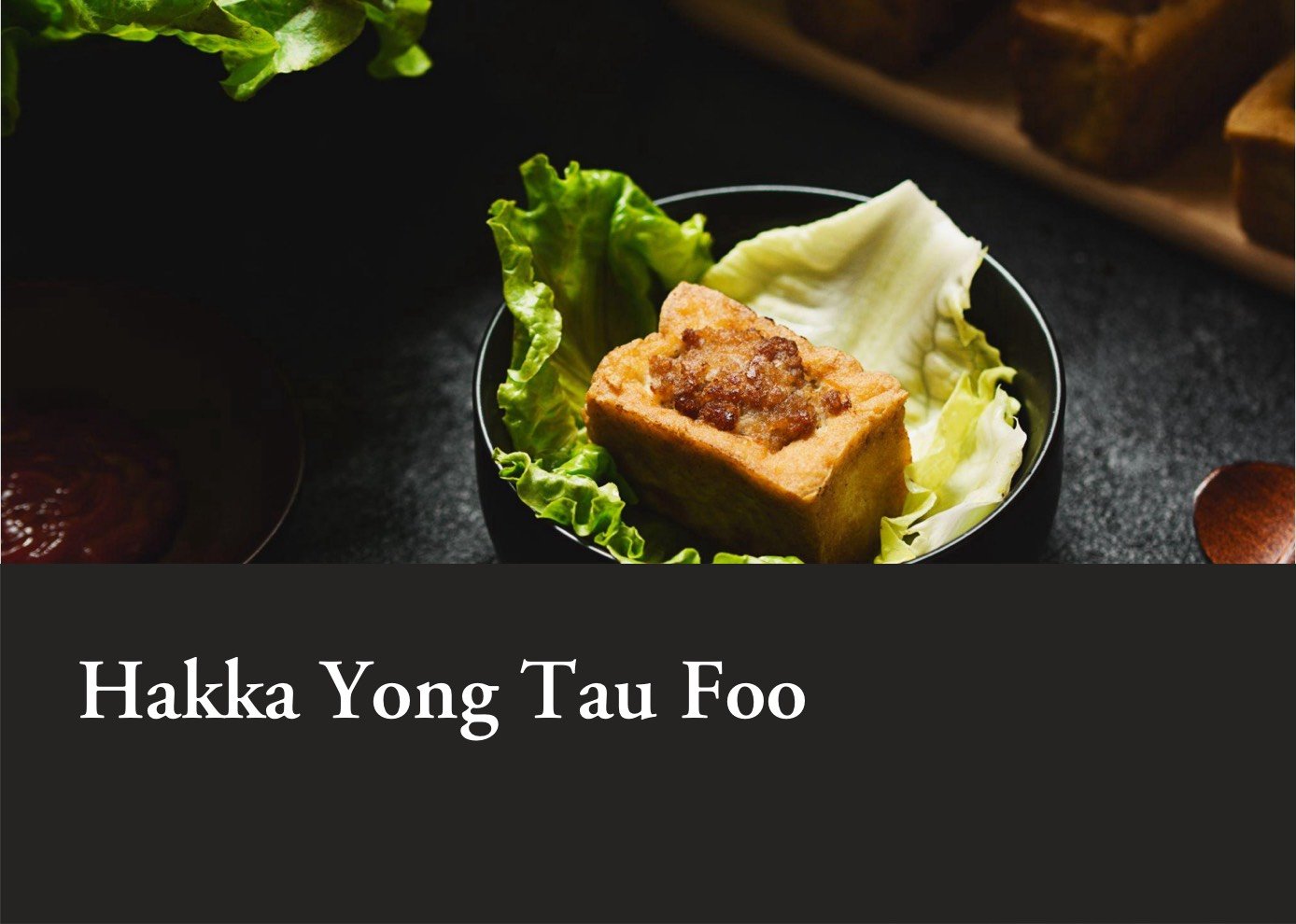Hakka Yong Tau Foo
Hakka Yong Tau Foo is a common dish in Lingnan region. Guangxi, Hunan and Jiangxi also have their own styles of this dish. The stories of the dish are mostly connected with the Hakka people. One said that the Hakka people changed the northern dumplings into meat-stuffed tofu when they migrated south. The origin of this story is unknown, but it includes elements that constitute the Hakka people's identity as an imagined community originated in the Central Plains. In 2015, Hakka Yong Tau Foo of Huizhou was listed as a Provincial Intangible Cultural Heritage in Guangdong.
Another story suggests that the dish was invented by a restaurant cook for two sworn brothers of Hakka, of whom the one from Wuhua liked pork, while the other from Xingning loved tofu. However, the earliest documented record was a poem from the 19th century. It was about Zhang, the poet from Jiaying (Meizhou), taking a trip from Lufeng to Hua County. Although his poem did not directly mention Yong Tau Foo, it pointed out that a hometown tofu dish of his was a stew. Nowadays, Yong Tau Foo of Mei County and Tai Po is usually made with bland tofu, which is first lightly fried, then braised in a pot, and served hot with a thick salty sauce. It is exactly the traditional Hakka cuisine style of Mei County and Tai Po: oily, salty, and hot (braised).

As Chinese emigrated overseas, Hakka Yong Tau Foo also emerged in Singapore and Malaysia. The more traditional Hakka families have inherited the cooking style of their ancestral origin in China. It is usually oily, salty, and dressed with hot broth. But nowadays, the Hakka Yong Tau Foo served by the market vendors in Singapore and Malaysia is mostly fried and air-cooled. It is a cheap local delicacy with many variations, such as stuffed eggplant, stuffed balsam pear, stuffed carob (okra), stuffed pepper, stuffed tomato, stuffed mushroom, and fried tofu skin. It is very similar to the Three Fried Stuffed Treasures, cheap street food sold in Guangdong and Hong Kong, but the Hong Kong-style filling is mainly made with fish paste and meat.

In fact, the “Hakka stuffed tofu” in Malaysia is also different. For example, the Guangxi-style Hakka Yong Tau Foo in Bentong, Pahang, soybeans and other ingredients are added in order to make the stock fresh and sweet . There are two types of Yong Tau Foo in general, fried tofu and braised bland tofu served with sauce. As for the Hakka people from Hepo, who farm in the suburbs of Kulai, Johor, they fry their stuffed tofu like the vendors in the market, but they would wrap it with big lettuce leaves. The crispness of the lettuce neutralises the oily and salty taste of the stuffed tofu and gives it a different texture. In Malaysia, there are Cantonese, Teochew, Fujian, and Hainanese styles of stuffed tofu, but the filling is mainly made with fish, while the filling of Hakka stuffed tofu is usually made with pork and salted fish. which is the essence of Hakka.
Influenced by Chinese food culture, local halal restaurants in Malaysia also serve stuffed tofu, but they use fish paste instead of minced pork for the filling. Malays call it Yong Tau Foo.

All articles/videos are prohibited from reproducing without the permission of the copyright holder.




Welcome to leave a message:
Please Sign In/Sign Up as a member and leave a message